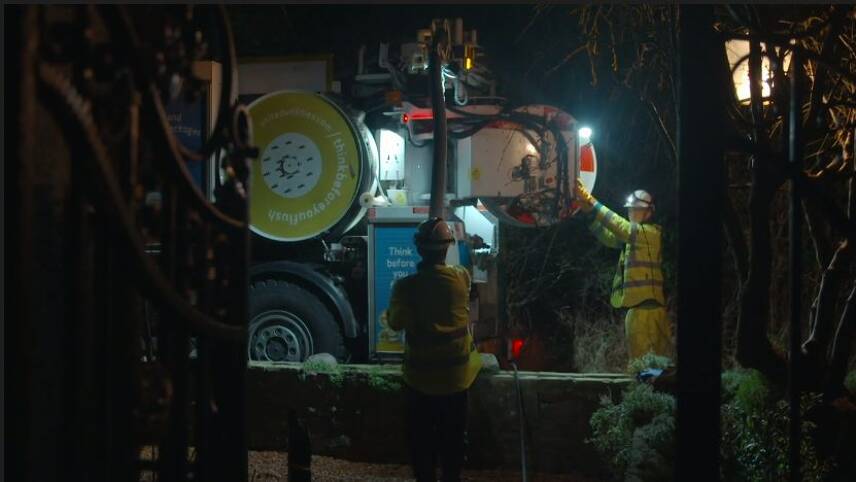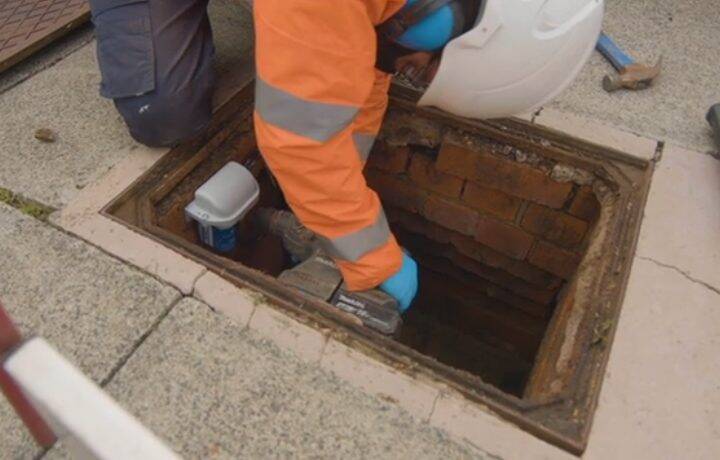You’ve reached your limit!
To continue enjoying Utility Week Innovate, brought to you in association with Utility Week Live or gain unlimited Utility Week site access choose the option that applies to you below:
Register to access Utility Week Innovate
- Get the latest insight on frontline business challenges
- Receive specialist sector newsletters to keep you informed
- Access our Utility Week Innovate content for free
- Join us in bringing collaborative innovation to life at Utility Week Live

UW Innovate speaks with network leaders from United Utilities to shed light on the water company’s breakthroughs in the use of artificial intelligence to proactively monitor and maintain its 78,000km wastewater network.
Managing a wastewater network of equivalent length to four flights from Manchester to Sydney while coping with the impacts of a growing population and climate change has heralded something of a watershed for United Utilities — the provider of water and wastewater services for seven million people across north west England.
The firm, which aims to invest £5.9 billion between 2020 and 2025 upgrading its services, recently unveiled plans to employ real-time data, artificial intelligence and machine learning to process data and identify issues such as blockages and rising water in its sewer networks via what’s known within the company as dynamic network management.
The approach will see more than 19,000 sensors installed in manholes across the north west and will bolster the company’s monitoring at both powered and non-powered sites.
“Due to the vast nature of the wastewater network, we often don’t know that there is an issue until it is experienced first-hand by our customers,” Mike Wood, water and wastewater network director from United Utilities says. “This is something we want to change.
“Our aim is to move away from the traditional reactive approach and to address problems proactively as much as possible, to ensure that we are managing the network, not the other way around.
“We want visibility as to what is happening on our wastewater network and when, so we can detect and prevent any unnecessary issues before they become a problem for customers or the environment,” he adds.
Getting ahead of operational incidents
According to Samantha Sloan, United Utilities’ network business manager and lead on dynamic network management, the 19,000 plus new units range from high level trigger sensors to analogue sensors which feed data to a centrally managed cloud based platform.
“The sensors offer not just rise and fall in water levels or power changes in places such as pumping stations but also use artificial intelligence to learn the trends and system performance, and more importantly pick up when there’s any deviation from its experience of what is normal for that particular location, so that we can schedule our teams to respond accordingly,” she tells Utility Week Innovate.
“This means we are able to get ahead of any operational incidents that could potentially have an impact on our customers, or the environment.”
As such, Sloan says that the new system will illustrate the performance of United Utilities’ sewer network and all point assets within the firm’s drainage areas. “So the types of data that we’ll be able to look at are things like the levels of the system, the pump performance, the hydraulic performance of the network and operational performance of our assets,” she says.
“We’ll be able to see things like the rainfall forecast and any changes in the performance of the system in response to that rainfall and the demands it can create on the system.
“We’ll also be able to visualise the connectivity within the network, so how these sensors relate to each other within the system, and more importantly how the assets within the drainage areas impact on each other,” Sloan continues. “So, the key element of the dynamic network management platform is really about understanding that ‘system level’ performance, which is a massive thing for us. We will be able to start understanding how any specific asset is performing, and the overall performance of the wastewater network in a particular area and how that can impact on other parts of that network.”

Analysing patterns of behaviour
United Utilities’ use of artificial intelligence to provide greater visibility on how its wastewater network and other assets function on a real time basis also offers the chance to predict any issues and provide customers with a “quiet service” before bigger problems develop.
“That could be things like the system detecting that there’s a build-up of silt in a particular area, or that we begin to see a deterioration in performance of a particular asset,” Sloan says. “The impact of this in the past may have been met with the customer experiencing something, such as flooding, first hand in many cases.
“We are now able to get our eyes and ears on what is happening on the wastewater network, to prevent things such as flooding or pollution, in a much more proactive rather than reactive way.”
The new technology identifies patterns in data gathered and compares it with other available datasets to provide a full understanding of the performance boundaries for each area. “So when there’s a change we can apply what we call an ‘event to alert logic’ to be able to determine what is the likely cause for that deviation from normality,” Sloan explains.
“The AI that we use is neural network that learns trends in the system, which is quite fundamental as it predicts the future behaviour as well as current activity,” she adds. “So it not only gathers information from the asset, but the environment within which that asset is performing, and allows you to predict patterns of behaviour, as opposed to just alerting on water reaching a certain level.
“It determines changes in pattern of behaviour that means you have a clear understanding when you are required to do something about the alert rather than simply responding for the sake of it.”
The approach and technology are both “new and novel” according to Sloan, and have not been applied on a mass scale anywhere else to the best of United Utilites’ knowledge.
“We needed to develop this new innovative approach to answer our requirements for now and into the future, which we believe will see this technology being rolled out across the board for all water companies within the next five to 10 years,” Sloan says.
“We are focusing on wastewater currently but we can see already how we could utilise AI across other areas of the business.”
Climate change response
For Sloan the sizeable task of deploying more than 19,000 sensors across a network of some 78,000km is, however, compounded by the challenge of implementing new technology within an “ageing infrastructure”.
“Managing the installations on such a large scale, across busy urban centres for example, can come with its challenges, from traffic management to health and safety and access issues to physically getting into the network,” she adds.
“There isn’t a blueprint to work from, which means it is a steep learning curve along the way. We are having to test, tweak and manage as we go, which requires patience and a great team of people on the programme to help develop and grow this bespoke solution, while ensuring that it is cost effective for our customers.”
We are seeing more intense and more frequent storms. Couple that with an aging network, things can feel more vulnerable
However Sloan believes that the use of AI is just the tip of a very exciting iceberg when it comes to sector innovation, suggesting that new iterations of dynamic network management and use of satellite imagery to understand network performance and condition are in the pipeline.
She adds that climate change is undoubtedly the biggest driver of innovation at United Utilities — and is one of the principal reason that dynamic network management has been developed.
“We are seeing more intense and more frequent storms,” she says. “Couple that with an aging network, things can feel more vulnerable and the impact felt is not only within the network but in the environment around the network too.
“Things such as rising river levels under these storm events, means that we cannot always discharge to the river, which in turn increases the risk of flooding. So what we are doing is targeting these areas that are at risk, with the dynamic network management solution, so we can best forecast the potential issues and respond accordingly throughout the year.
“Dynamic network management not only allow us to understand issues such as storm intensity and the impact it has, but also seasonal variations across the region, all of which will help us to better plan our resources and to support our approach for further investment over the next 10 to 20 years for our drainage areas.”

See this content brought to life at Utility Week Live, 17-18 May 2022 NEC Birmingham
Delivering smart water networks is one of the frontline challenges at the heart of Utility Week Live 2022’s live content programme.
View the challenges and be alerted for tickets to the industry’s most eagerly awaited reunion at utilityweeklive.co.uk.
Please login or Register to leave a comment.